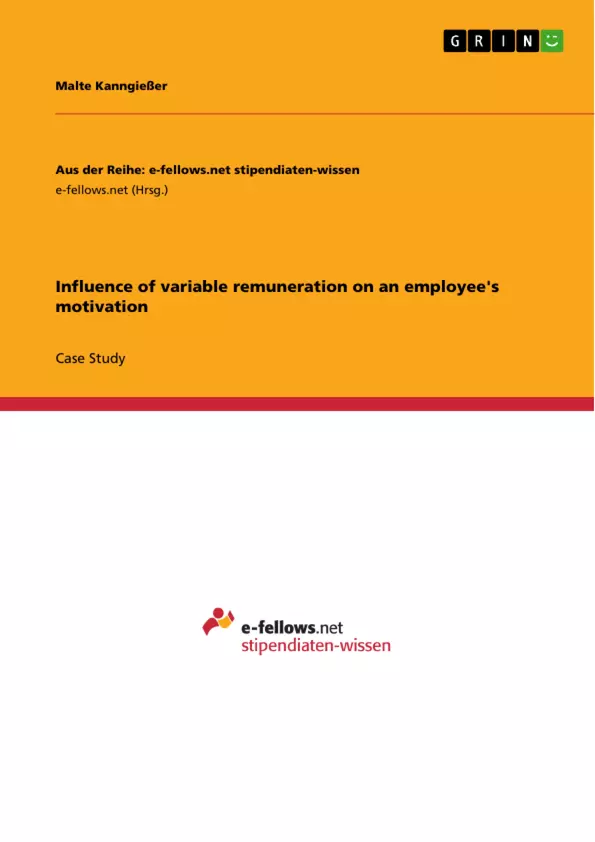This assignment delves into the intricate relationship between variable remuneration and employee motivation within a large European company, using a case study approach to provide pragmatic insights. Beginning with a comprehensive introduction, key terms are defined, and the importance of intrinsic and extrinsic motivations is elucidated.
The literature review offers diverse perspectives, emphasizing the significance of transparent evaluation processes and alignment with organizational goals. The case study unveils issues of opacity and inconsistency in performance evaluation, leading to a critical analysis highlighting the need for reformulating the variable pay scheme.
Key problems identified include the lack of transparency, difficulty in decreasing variable pay for underperforming employees, and limitations in awarding high performers.
Potential solutions revolve around recalibrating evaluation criteria and considering broader organizational dynamics, such as employee empowerment. The assignment concludes with an outlook, proposing theoretical options for reformulating the variable pay scheme to enhance motivation and mitigate disparities. However, it underscores the importance of ongoing evaluation and adaptation to evolving organizational dynamics.
Further research is recommended to explore the effectiveness of proposed interventions in fostering a more equitable and motivational work environment. By fostering a culture of continuous improvement and responsiveness to employee needs, the company can enhance organizational effectiveness and employee well-being.
Inhaltsverzeichnis (Table of Contents)
- 1 Introduction
- 2 Case
- 3 Literature review
- 4 Critical analysis and possible solutions
Zielsetzung und Themenschwerpunkte (Objectives and Key Themes)
This assignment investigates the complex relationship between variable remuneration and employee motivation within a large European company. It utilizes a case study approach to offer practical insights into the impact of variable pay schemes on employee engagement and performance.
- Influence of variable remuneration on employee motivation
- The importance of intrinsic and extrinsic motivation
- Transparent evaluation processes and alignment with organizational goals
- Issues of opacity and inconsistency in performance evaluation
- Potential solutions for improving variable pay schemes
Zusammenfassung der Kapitel (Chapter Summaries)
Chapter 1: Introduction This chapter introduces the assignment's focus on the interplay between variable remuneration and employee motivation, using a case study from a large European company. Key terms are defined, and the significance of intrinsic and extrinsic motivation is explained. A literature review is previewed.
Chapter 2: Case This chapter presents a brief overview of the case study, based on the author's experiences within the company. It serves as a foundation for further analysis.
Chapter 3: Literature review This chapter summarizes existing research on variable remuneration and its impact on employee motivation, considering both positive and negative aspects relevant to the presented case.
Chapter 4: Critical analysis and possible solutions This chapter analyzes the case study, applying theoretical aspects discussed previously. It presents potential solutions to address the identified problems.
Schlüsselwörter (Keywords)
Variable remuneration, employee motivation, intrinsic motivation, extrinsic motivation, performance evaluation, case study, transparent evaluation processes, organizational goals, compensation frameworks.
- Citation du texte
- Malte Kanngießer (Auteur), 2024, Influence of variable remuneration on an employee's motivation, Munich, GRIN Verlag, https://www.grin.com/document/1508304



